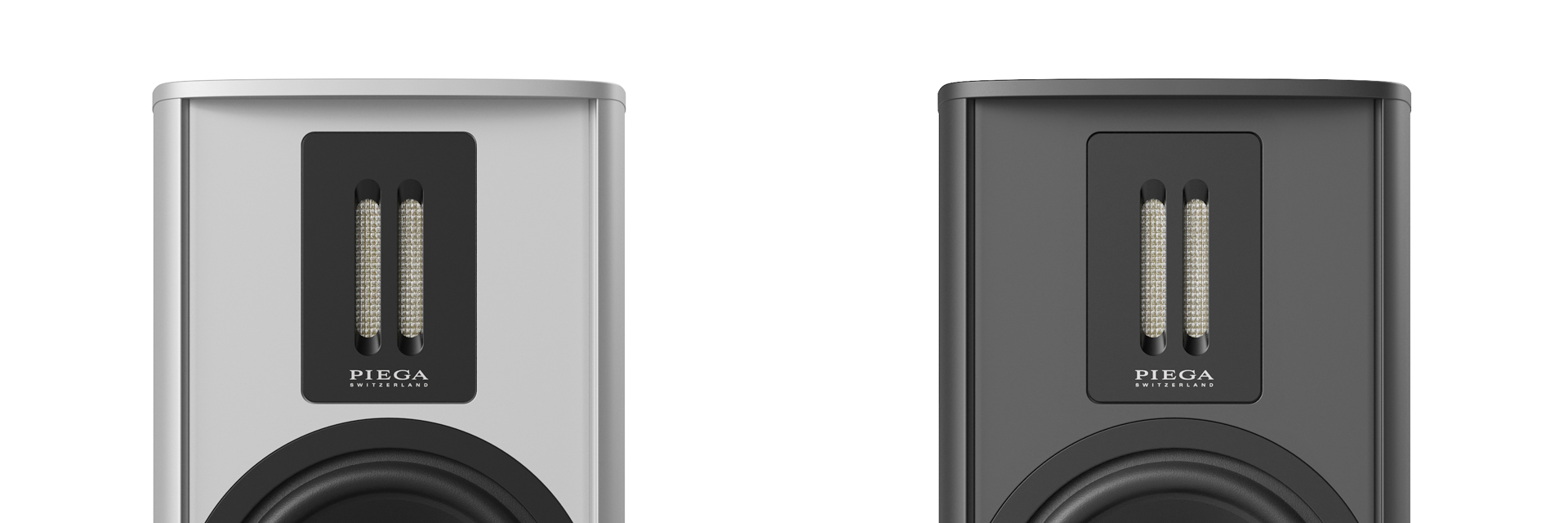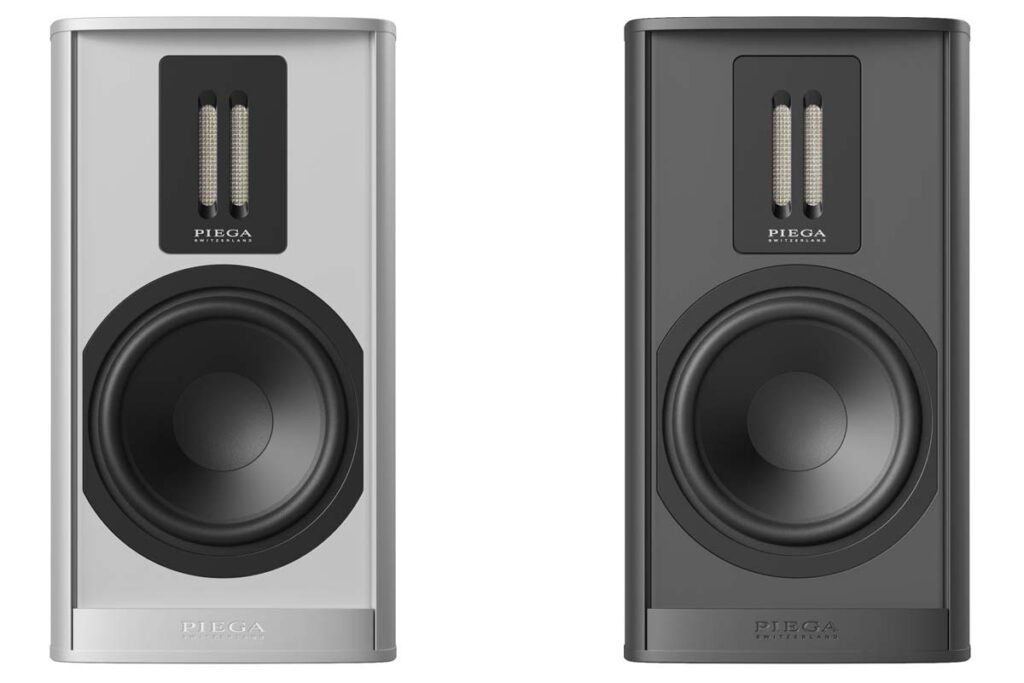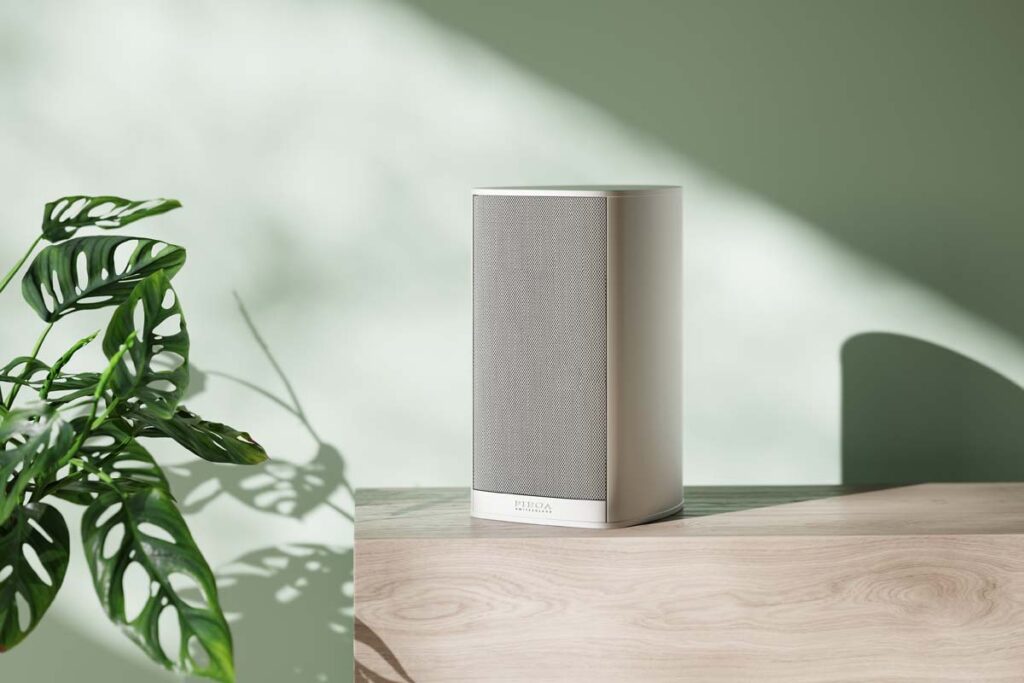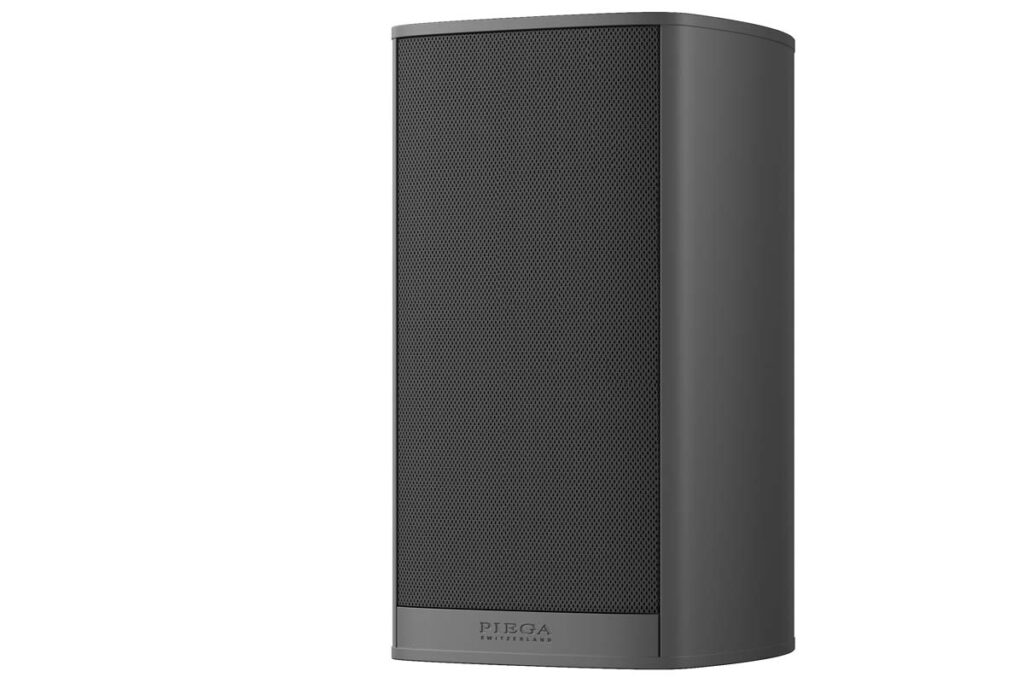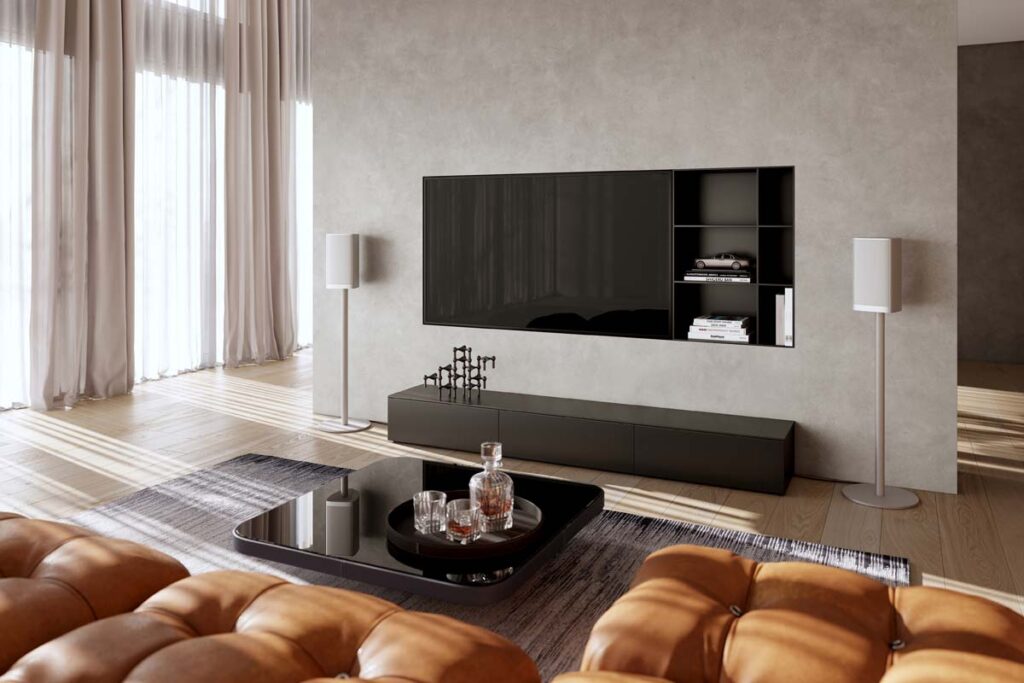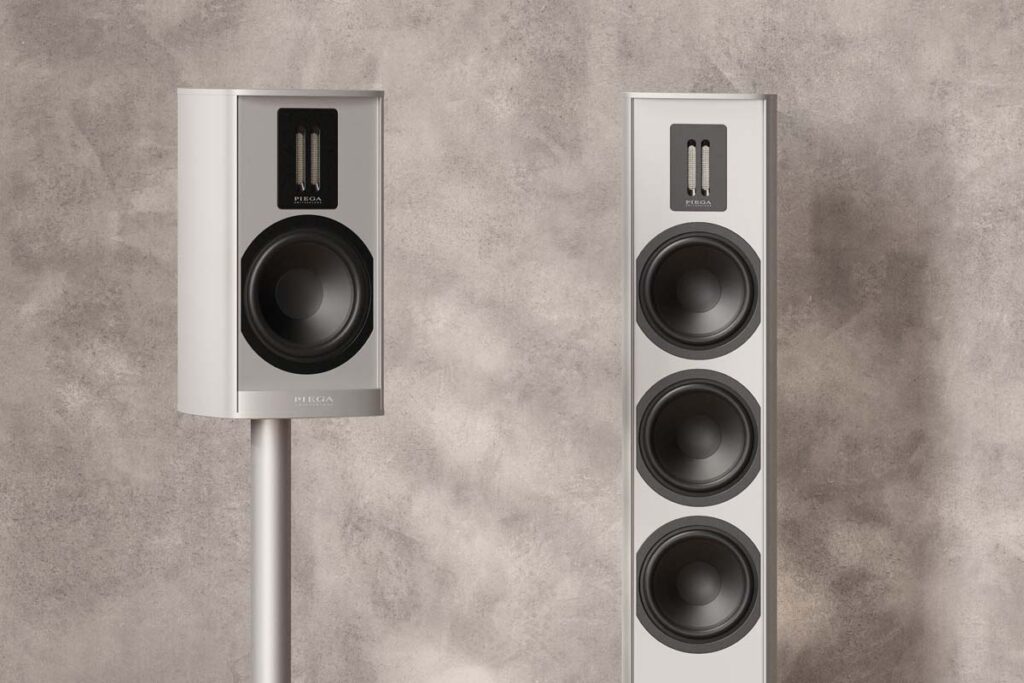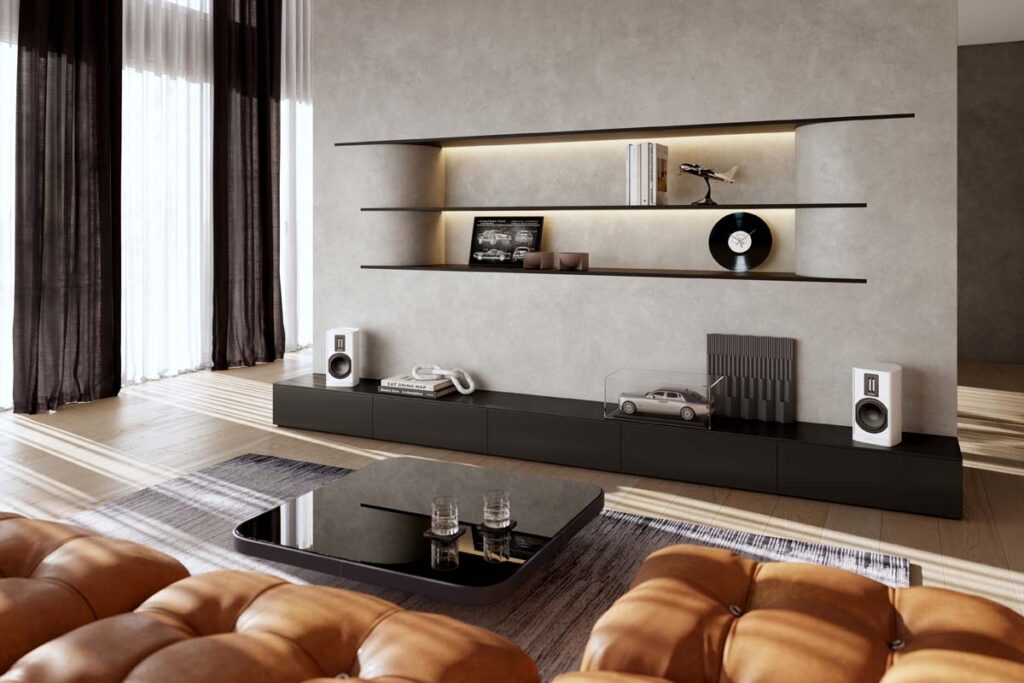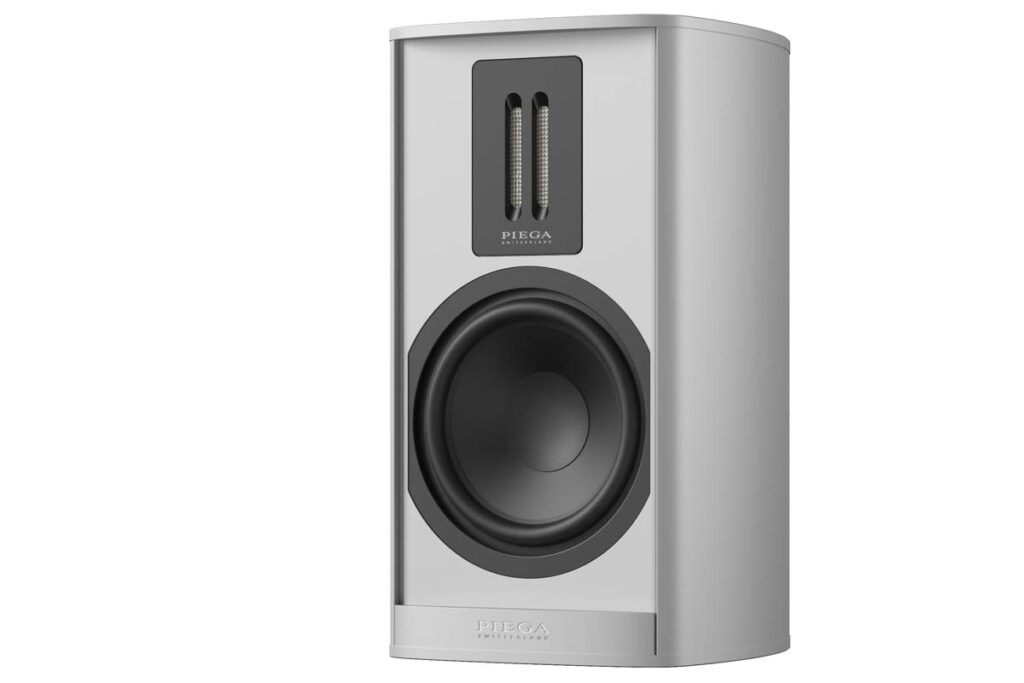The second generation of Piega’s premium series has not only become more compact, but also comes with newly developed drivers. What has remained is the charming, timeless design of the Swiss speakers. The two-way bass reflex loudspeaker for small to medium-sized rooms really does need a lot of break-in time, but then transforms from an inconspicuous caterpillar into a sonic butterfly.
The first sound impressions from the precisely manufactured and also haptically top-notch loudspeakers were … let’s just say I wasn’t blown away. Cold out of the box, the Piegas sounded restrained. Of course, many manufacturers, including the Swiss, make reference to the break-in time. However, what might be more of a marketing slogan elsewhere is actually a sound truth at Piega. After I had initially moved the Piega Premium 301 Gen2 from the listening position back towards the rear wall to let it play for a good while (it took more than two weeks!), I suddenly noticed at my desk in the next room that the background music had become much more vivid somehow. Had I unconsciously switched to my physically larger main monitoring system? No, it really was the same speakers that had sounded as unspectacular as it gets just 14 days ago.
Restrained sounding at first – particularly in the treble –, the bookshelf loudspeaker had blossomed into a homogeneous performer whose tweeter and bass-midrange drivers played together on equal footing. The bass range – already convincing at the beginning in relation to the cabinet volume – had gained more definition in the meantime and subjectively pushed a few more air molecules. I immediately placed the Piega Premium 301 Gen2 back on my Partington stands in the optimum listening position. Many hours of pleasant music listening ensued.
The second generation of the Piega Premium series – the second smallest from the Swiss – speaks the same design language as the previous version with its parabolic aluminum housing, but is otherwise a completely new speaker. From the reduced cabinet volume to the revised bass-midrange driver and the planar magnetic ribbon tweeter, everything is new here! The RM01-24 ribbon bears the initials of its developers Roger Kessler and Mario Ballabio. The latter has the ribbon gene in his blood. Back in the 1980s, his father Aldo had already been producing the sophisticated high-frequency drivers together with Piega co-founder Kurt Scheuch. Mario (who at one time was a professional surfer) learned from his father how to fold ribbons from thin aluminum foils. In fact, this process is still in the company name today: “Piegare” is the Italian word for ‘to fold’. Incidentally, the family saga continues with Mario’s daughter Ailina, who’s also been working for the Horgen-based manufacturer for some time now.
The new RM01-24 works with three symmetrically arranged neodymium magnets in front of and behind the ribbon, which weighs just 82 milligrams. The flat coils on the diaphragm are worked out using a spray etching process. Just like the coaxial ribbon of the higher series. The aim was to further reduce distortion and achieve a clear and natural reproduction of vocals and instruments. The new Piega ribbon is indeed characterized by a high level of detail. Cymbals are well positioned and reproduced without any harshness or peaks. I can hear articulation noises just like in the studio, but they are not overemphasized. The most important point for me, however, is the seamless connection to the coated paper bass-midrange driver, which has also been revised and which the Swiss call the “Full Symmetric Drive” bass-midrange driver (FSD-M). With a diaphragm diameter of 140 millimeters, it produces a convincing bass foundation from the compact bass reflex cabinet even at modest volume, which is in no way inferior to that of a much more expensive standmount loudspeaker reviewed last year! Solid single-wire connection terminals round off the good overall impression of the Swiss-made loudspeaker.
Electronic bass drums have been an integral part of pop productions since the 1980s, but are generally not really a pleasure on small two-way monitors. The Cologne-based producer duo Blank & Jones have not only dealt extensively with Trevor Horn’s sound design throughout their career, but have also produced some good-sounding productions with these rhythmic sound generators. The track “Monday” from the current album #WhatWeDoAtNight4 is a sonically outstanding example of tasteful electronic music. The low impulses come out of the speakers with precision and an appropriately defined high frequency range. The 301 Gen2 delivers a powerful foundation which, unlike many bass reflex designs, doesn’t blur the blackness between the individual beats by muddying the upper mids. The Piegas remain dynamic, precise and clean, and together with the balanced sound of the ribbon, this results in a sound experience that, in my opinion, leaves nothing to be desired in rooms up to 20 square meters. The reproduction is balanced across all frequency ranges, the music is bouncy, the dynamics are palpable, nothing seems compressed. In my many years as a reviewer, I have never experienced this level of sovereignty and sonic grandeur in a compact two-way speaker – and I’ve heard quite a few candidates (including those in the five-digit price range)!
I put on Japanese jazz. Hiroshi Suzuki’s “Romance” from the mid-1970s features a sparkling Rhodes and trumpet over a driving beat of powerful bass and drums recorded with recognizable space. Here, too, I don’t just get an image of the four-string, but actually a realistic-sounding electric bass. The ensemble swings with precise timing and absolutely to the point. In addition to the authentic bass reproduction, the Piegas also provide an outstanding example of spatiality. The drums are located in an audible space, and the dynamic subtleties of the decay of the snare’s shell and the slight shuffle of the hi-hat are conveyed in addition to the revealing spatial information. Details galore, but without getting lost in them. In any case, I rarely found myself skipping to the next song mid-track during the review period. That’s always a good sign.
With its 89 decibel efficiency, the Piega can cope with any good transistor (or vice versa), but my Luxman tube felt right at home with the Swiss loudspeakers, too. Here I was able to distinguish the more open playing style of my tube amplifier from the semiconductor drive very well. However, the basic characteristics of the loudspeaker remained the same, even in the bass range.
The ballad “Sacred Ground” by Irish songwriter Kieran Goss, reminiscent of Peter Gabriel at the beginning, shows how well and precisely a beautifully recorded voice can be placed in the center of the stereo triangle. Free and detached from the actual sound transducers, Goss draws the listener into the deep blue of the record cover with the catchy melody of this song. The sonic manipulation of the drums in the studio compared to the previously heard jazz recording quickly becomes clear. The musical approach of the song always remains in the foreground.
Admittedly, at the beginning of the review phase I was rather skeptical about the restrained performance after unpacking the brand new loudspeaker. However, after a break-in period of two weeks, the Piega Premium 301 Gen2 transformed into one of the best compact loudspeakers I have ever had the pleasure of listening to. I don’t tend to use superlatives, but the balanced, mature sound of this bass reflex design has hardly been matched by any other. The best compliment to the Swiss speaker, however, is that I have rarely listened to a review sample so often and for so long. An all-round success!
THE LONG ROAD TO A SIMPLE SHAPE
It took more than 30 prototypes before Generation 2 of the premium series was released; the housing and technology were completely revised by Roger Kessler’s team. This applies not only to the RM01-24 ribbon tweeter with precisely orthogonal magnetic field lines on the aluminum ribbon, but also to the new bass-midrange driver with an iron magnet and coated paper cone. This “supersymmetrical driver” requires only half of the previous magnetic material and is a further step towards sustainability by the Swiss manufacturer.
Accompanying Equipment
CD player/converter: Luxman D-N150 | Turntable: Elac Miracord 70 with Audio-Technica AT33-PTG II | Streamer: Volumio | Phono preamplifier: Luxman E-250 | Integrated amplifier: Luxman SQ-N150, Linn Majik | Power amplifier: Graham Slee Proprius | Speakers: Klipsch Heresy IV | Cables: Ecosse, TaraLabs, Furutech, Supra, Graham Slee, Corfac2, Silent Wire
Loudspeaker Piega Premium 301 Gen2
Concept: 2-way bass reflex standmount loudspeaker with ribbon tweeter in aluminum housing; Design: Stephan Hürlemann | Inputs: single-wire terminal (Piega Multi Connector II) | Impedance: 4 Ω | Sensitivity: 89 dB | Special features: 3 symmetrically arranged neodymium magnets in front of and behind the ribbon | Finishes: “natural” (aluminum) as well as white or black lacquered | Dimensions (W/H/D): 17/31/23 cm | Weight: 6.1 kg | Warranty period: 2 years | Price per pair: from 2500 €
Piega
Bahnhofstrasse 29
8810 Horgen
Switzerland
Phone +41 44 725 90 42
mail@piega.ch

